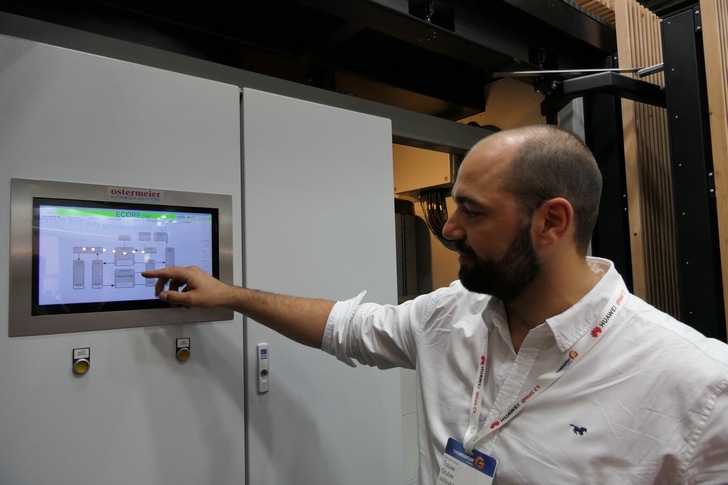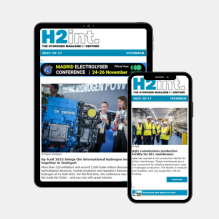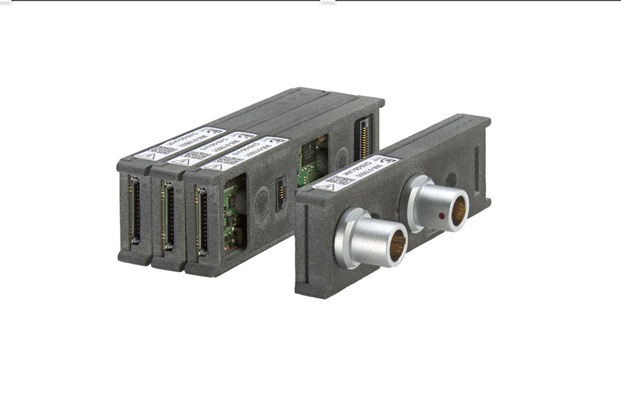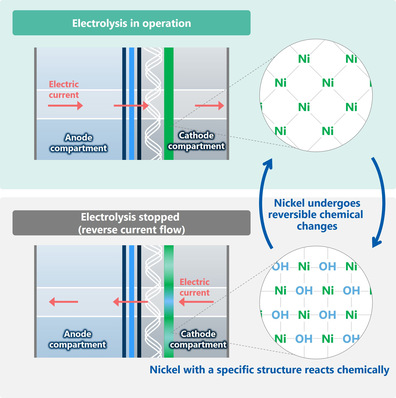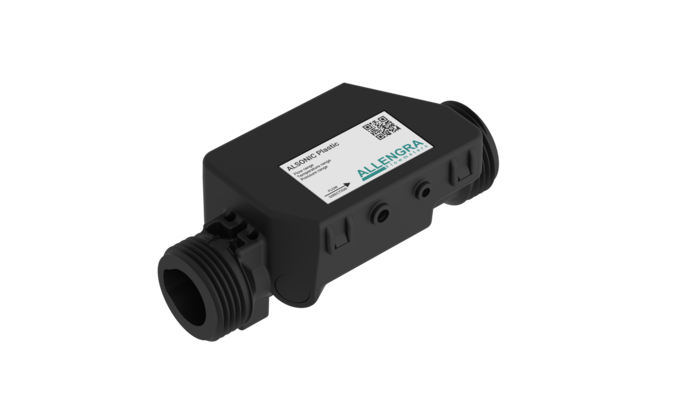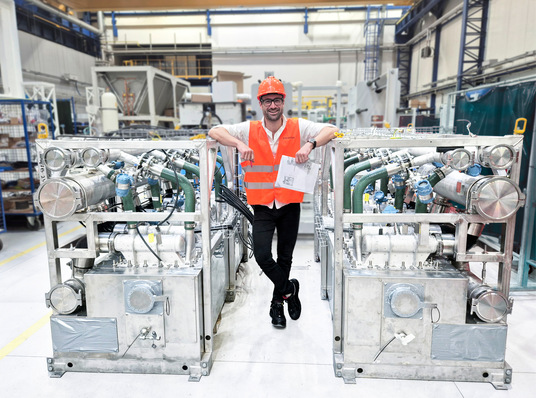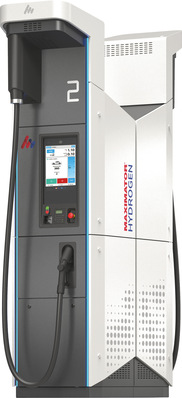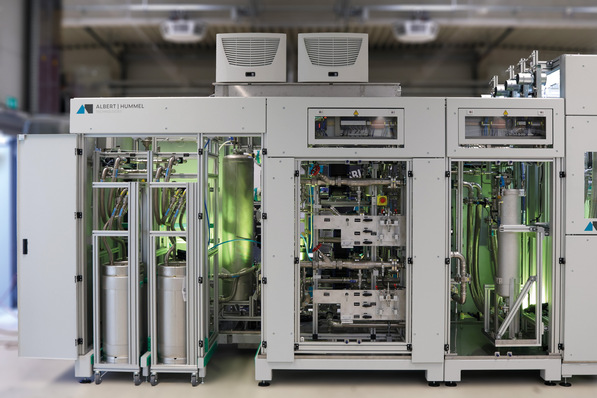“The components – from the electrolyzer and fuel cell to batteries and heat pumps through to the H2 compressed gas storage tank – are available individually,” says Tobias Gruber, Head of Products at Infener. The young company’s innovation is to combine these technologies efficiently into a single energy system. The Ecore One is flexibly scalable and therefore not just limited to single-family homes. It can also supply larger buildings such as hotels, companies or entire neighborhoods with self-sufficient and CO₂-neutral heat and electricity – or the system can be operated to serve the grid if required. The built-in PEM electrolyzer covers an output of between 10 and 50 kW.
The complete plug-and-play solution also received the German Innovation Award last year. The jury was impressed by the energy system, which can be adapted to different buildings and comes in a compact turnkey solution, making it “particularly convenient.” Another advantage is that “this solution eliminates the need for equipment rooms, as the transportable containers are located outside the building,” according to the jury.
The young company – headquartered in Stansstad, south of Lucerne in Switzerland – is a spin-off from the W&P Engineering Group. “We recognized hydrogen as a key area for the future back in 2018,” explains Gruber. The Ecore One was the first idea of the two founders Joel Vogl and Felix Schmid. The system is designed to enable an independent and hydrogen-based supply of electricity and heat to buildings. “However, we quickly realized that the demand for hydrogen was greater,” says Gruber.
Many energy-intensive industries want to switch to hydrogen, but the supply is simply not there yet, according to Gruber. “That’s why we have also started to implement hydrogen hubs and large-scale projects,” he says, describing the holistic approach. The aim is to meet the demand from energy-intensive industries and medium-sized companies in a decentralized manner and independently of the core network. The company is currently growing continuously and is implementing projects in Norway and Portugal, for example.
Investment of 45 million euros required
Plans for the hub in the Black Forest are already far advanced: It will be built in Villingen-Schwenningen on an area of around 10,000 m² (108,000 sq ft) in the Salzgrube industrial park. This is because the industrial region is not expected to be connected to the cross-regional H2 pipeline before 2040. For this reason, the electrolysis capacity of the plant will gradually increase from 5 MW to 20 MW from 2027 – enough to produce around 2,000 metric tons of green hydrogen per year in the final stage. The investment is expected to amount to 45 million euros. The energy requirements of the regional logistics, transport and industrial sectors are already greater today.
The design of the hub is visually impressive thanks to its natural wood cladding. It was designed by the Hamburg architecture and design office Hadi Teherani. As for project management on site, this will be undertaken by the architecture firm Schleicher.
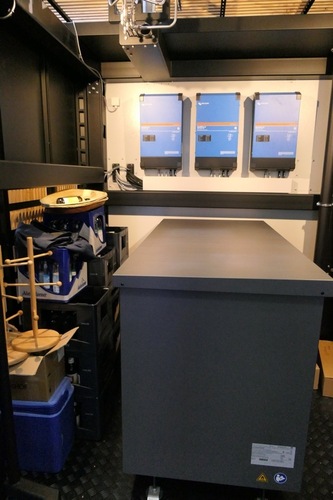
Fig. 2: Heat pump at the front and solar inverter on the wall
This is not just about the efficient generation of electricity and heat. Even the waste heat from the operation of the fuel cells is used and further optimized with the help of the heat pump so that it can be used for industrial processes or in heating networks. The oxygen that is also produced during electrolysis is primarily used for oxyfuel combustion. This also helps to decarbonize industrial processes more effectively. Direct electricity supply contracts, known as power purchase agreements or PPAs, with operators of wind and photovoltaic plants in the region provide the green electricity for the operation of the H2 hubs. Potential customers have also already been acquired: The logistics company Noerpel is planning to use the green hydrogen to refuel H2 truck or bus fleets, and the Move transport association is also supporting the project.
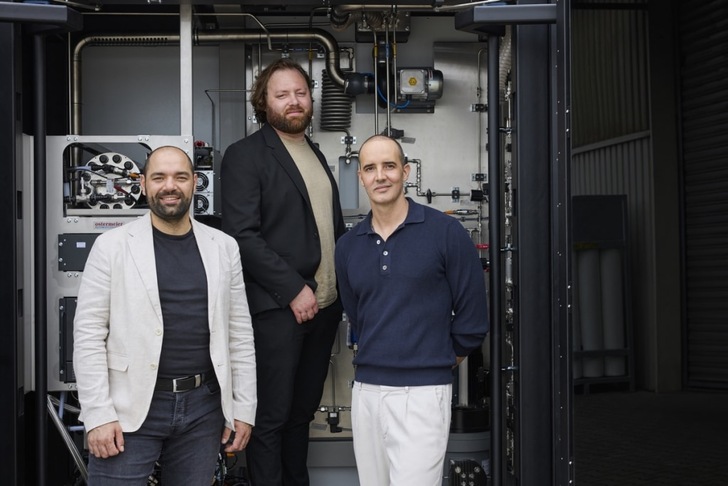
Fig. 3: Tobias Gruber (left) with the two founders Joel Vogl (CEO) and Felix Schmid, Photo: Mary Goldau
In addition to the 20-MW hub in Villingen-Schwenningen, further projects are already being planned in Gengenbach and Neumünster. The commissioning of the 50-MW hub in Neumünster, for example, is planned for 2027. Gengenbach is located just a few kilometers south of Offenburg in Baden-Württemberg. The town wants to help establish the use of green hydrogen, says former mayor Thorsten Erny, who was in office until the end of 2024 and supported the project.
2,000 tons of green hydrogen per year
The project on the Kinzigpark I industrial park is currently in the design phase. Whether or not it will be built still depends on the results of this planning phase and the signing of the PPA for green electricity as well as the final investment decisions. Local politicians, municipal utilities and the regional economic development agency are already supporting the project. The plan is to produce around 2,000 metric tons of H2 per year.
Politicians want to support the expansion of H2 production with their targets: The EU is planning to expand electrolysis capacity to 40 GW by 2030, with Germany alone aiming for 10 GW. However, only 100 MW have been installed in Germany to date. Infener has set itself ambitious goals for the coming years and wants to play an active role in shaping the European hydrogen economy. “We want to contribute up to 9 GW in the next few years,” says Tobias Gruber.


